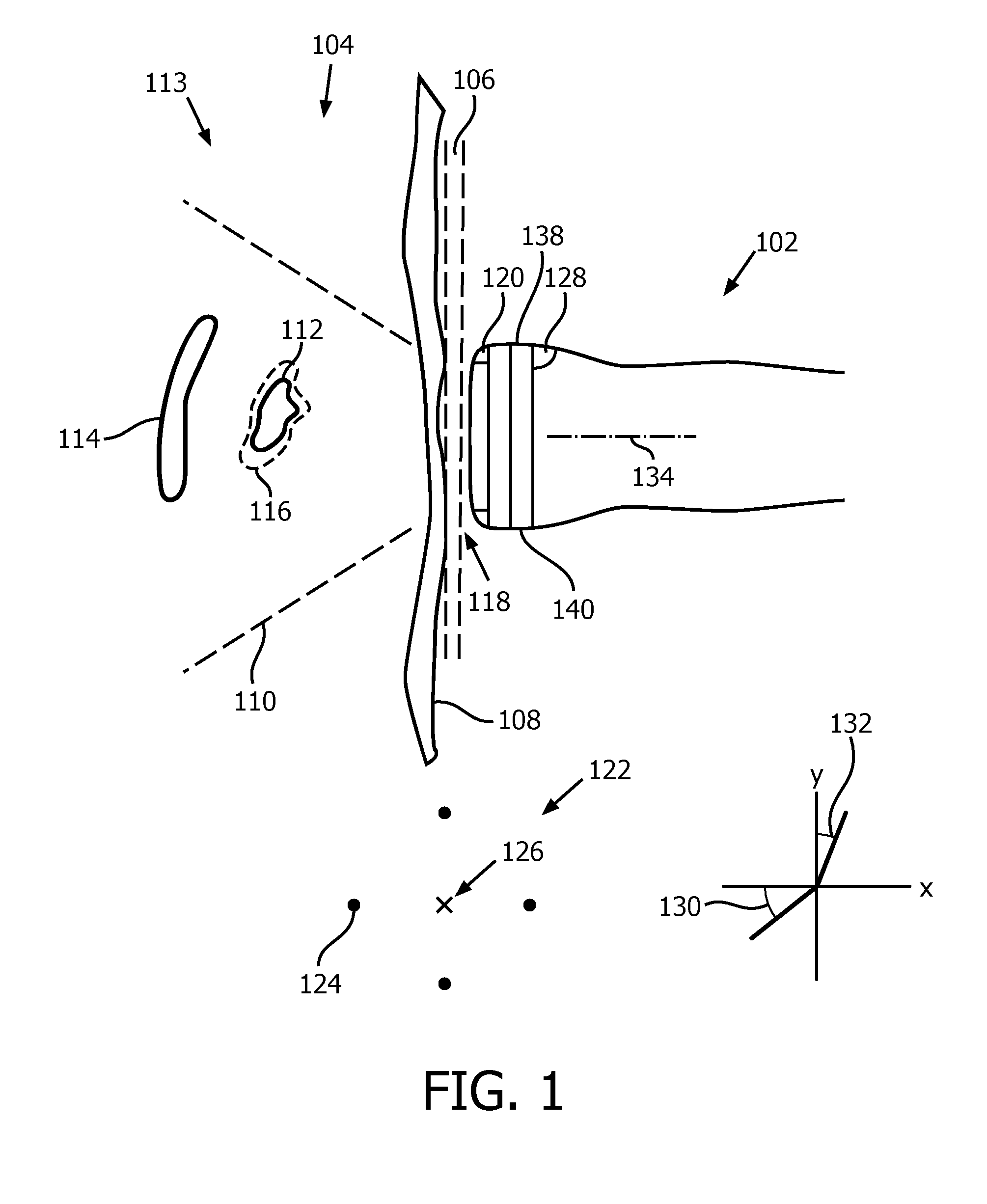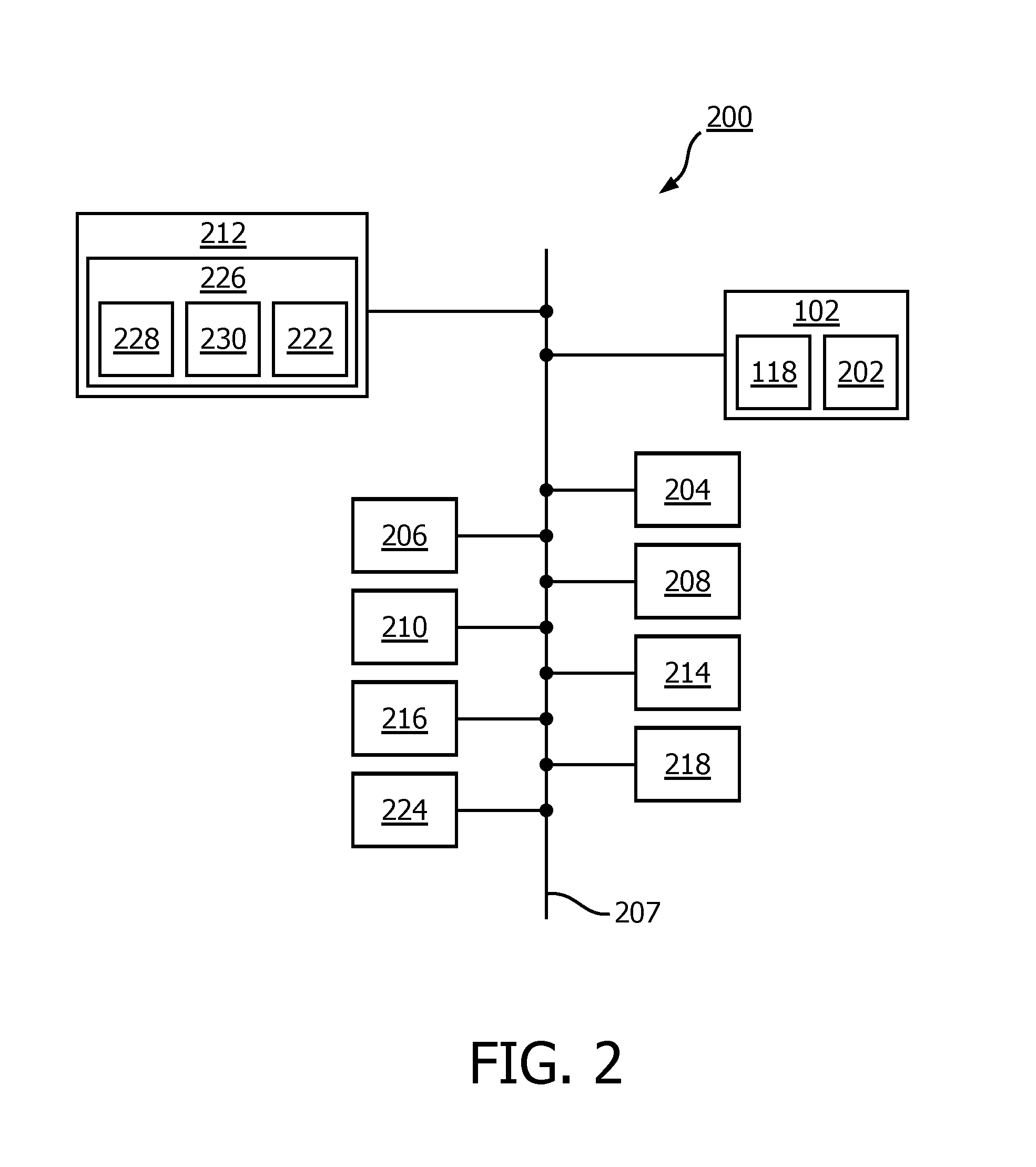Consistent sequential ultrasound acquisitions for intra-cranial monitoring
a technology of intra-cranial monitoring and sequential ultrasound, which is applied in the field of positioning of medical imaging probes, can solve the problems of common delay of about one hour to perform ct scans, inability to move patients from the bed to the ct room for repeated follow-up, and inability to perform repeated ct examinations. to achieve the effect of quick ascertaining presence and monitoring
- Summary
- Abstract
- Description
- Claims
- Application Information
AI Technical Summary
Benefits of technology
Problems solved by technology
Method used
Image
Examples
Embodiment Construction
[0047]FIG. 1 depicts an exemplary probe 102 for consistent sequential ultrasound acquisitions for intra-cranial monitoring of a medical subject 104, such as a human patient or animal.
[0048]It will be assumed, in the description that follows, that this single probe 102 is used for all the acquisitions. However, a medical imaging device could feature one or more other probes, any one of which can be applied to the subject 104 for a given acquisition. In this disclosure, any of the probes, if there are more than one, could be characterized as “a probe said medical imaging device comprises.” Otherwise, if there is a single probe, that probe is “a probe said medical imaging device comprises.”
[0049]The probe 102 is applied to skin 106 of the subject 104 in the temple area of the head. The probe 102 is therefore pressed against an underlying, bony structure, a temporal bone 108. Due to the uneven nature of the temporal bone 108, changes in the probe position and / or angle lead to drasticall...
PUM
 Login to View More
Login to View More Abstract
Description
Claims
Application Information
 Login to View More
Login to View More - R&D
- Intellectual Property
- Life Sciences
- Materials
- Tech Scout
- Unparalleled Data Quality
- Higher Quality Content
- 60% Fewer Hallucinations
Browse by: Latest US Patents, China's latest patents, Technical Efficacy Thesaurus, Application Domain, Technology Topic, Popular Technical Reports.
© 2025 PatSnap. All rights reserved.Legal|Privacy policy|Modern Slavery Act Transparency Statement|Sitemap|About US| Contact US: help@patsnap.com



